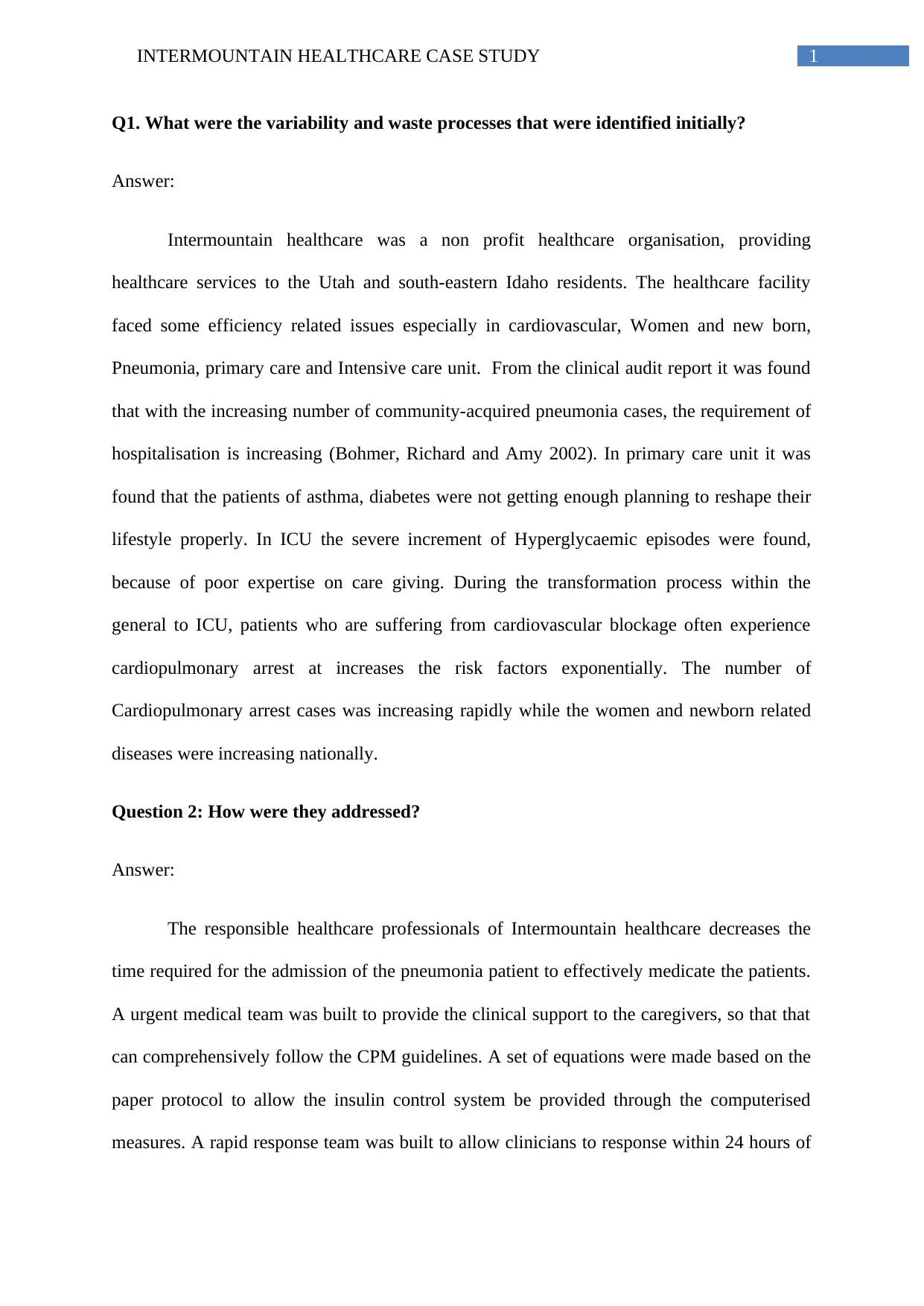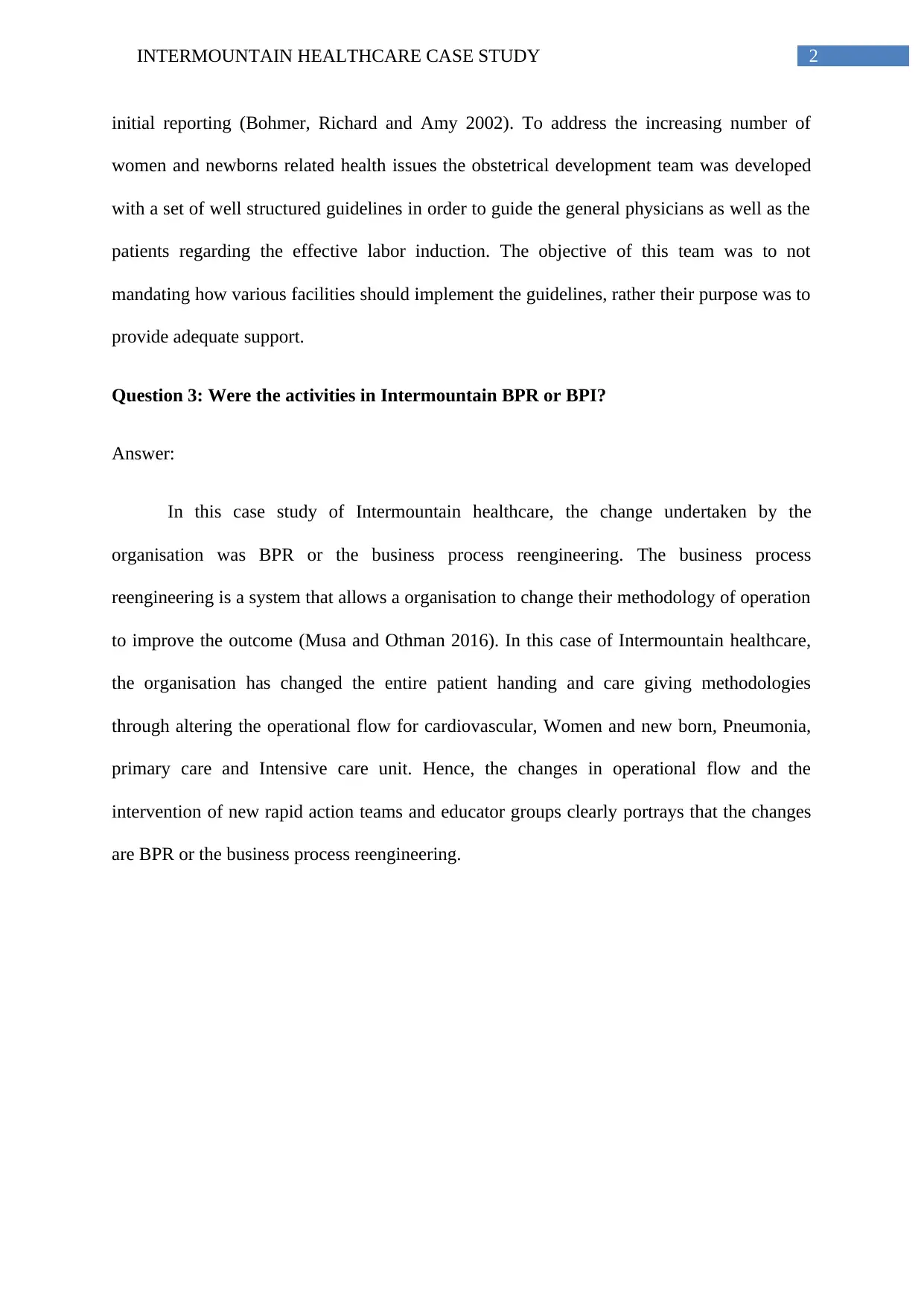Intermountain Healthcare Case Study: BPR and Clinical Program Analysis
VerifiedAdded on 2023/01/19
|4
|611
|97
Case Study
AI Summary
This case study examines Intermountain Healthcare, a non-profit healthcare system, and its efforts to improve patient outcomes and efficiency. The assignment identifies variability and waste processes in areas like cardiovascular, women and newborn care, pneumonia, primary care, and intensive care units. It details how Intermountain addressed these issues through the implementation of clinical programs, rapid response teams, and new guidelines. The analysis determines that the changes undertaken by Intermountain were examples of Business Process Reengineering (BPR), which involved altering operational flows and introducing new initiatives to enhance patient care and streamline processes. The case study highlights Intermountain's commitment to healthcare quality improvement and its success in providing high-quality care at a lower cost.
1 out of 4





![[object Object]](/_next/static/media/star-bottom.7253800d.svg)